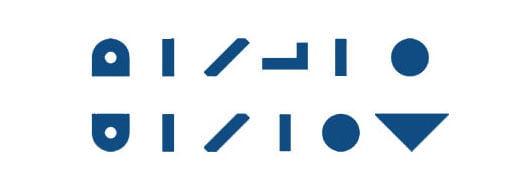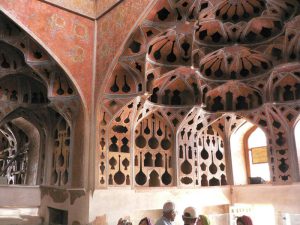نوع مقاله : مقالۀ پژوهشی
نویسندگان
- حسین نوروزی قره قشلاق 1
- ایمان زکریایی کرمانی 2
- احمدرضا نصر اصفهانی 3
1 پژوهشگر دکتری پژوهش هنر، دانشکدة پژوهشهای عالی هنر و کار آفرینی، دانشگاه هنر اصفهان، ایران.
2 استادیار گروه فرش، دانشکدة صنایع دستی، دانشگاه هنر اصفهان، ایران.
3 استاد گروه علوم تربیتی، دانشکدة علوم تربیتی و روانشناسی، دانشگاه اصفهان، ایران.

باغ نظر (ماهنامه)
دوره 18، شماره 98
مرداد 1400
صفحه 44-33
بیان مسئله: با توجه به اهمیت و لزوم توسعة صنایع دستی به عنوان یک مؤلفة فرهنگی- اقتصادی، نیاز است در تمامی ابعاد مؤثر بر آن مطالعاتی صورت گیرد و راهکاری در این خصوص تبین شود. آموزش عالی این رشته در مقطع کارشناسی از سال 1362 اقدام به جذب دانشجو کرده و تاکنون از یک برنامة درسی ثابت و با رویکردی یکسان تبعیت کرده است. از آنجایی که شایستگیها و لزوم توجه به آنها به عنوان یک امر توسعهدهنده در برنامههای درسی ضروری است؛ باید در هر رشتهای به طور پیاپی و با توجه به شرایط موجود مورد بررسی و ارزیابی قرار گیرد. بر این اساس پژوهش حاضر در صدد پاسخ به این سؤال است که شایستگیهای حرفهای صنایع دستی مقطع کارشناسی ایران که در برنامة درسی آن کمتر مورد توجه قرار گرفتهاند، کدامند؟ این مطالعه میتواند مقدمه و راهکاری بر لزوم توجه و بازنگری برنامة درسی این رشته محسوب شود.
هدف پژوهش: شناسایی وجوه مغفول شایستگیهای حرفهای در برنامه درسی دورة کارشناسی صنایع دستی ایران، هدف اصلی این مطالعه است.
روش پژوهش: تحقیق پیش رو از نوع کیفی و با روش اسنادی و تحلیل محتوای کیفی صورت گرفته است. استفاده از رویکرد تطبیقی در این پژوهش نیز، با هدفِ بررسی شایستگیهای حرفهای صنایع دستی در آموزش عالی کشورهای ایران، ترکیه، مالزی، هند و انگلیس در سه بٌعد دانش، مهارت و نگرش انجام شده است.
نتیجهگیری: نتایج حاصله نشان میدهد که در راستای ارتقای رشتة صنایع دستی در ایران علاوه بر تأکید برنامة درسی بر مهارتهای فنی و دانش فرهنگی و تاریخی-که خود از اهمیت بسیاری برخوردارند- لازم است سایر شایستگیهای ضروری، با رویکردهای کارآفرینی، اقتصادی و اجتماعی نیز مورد توجه جدی قرار گیرند.
A Comparative Study of Professional Competencies of HandiCrafts in a Few Countries and Explaining Its Neglected Aspects in the Iranian Undergraduate Curriculum
نویسندگان [English]
- Hossein Norouzi Gharagheshlagh 1
- Iman Zakariaee Kermani 2
- Amadreza Nasr Esfahani 3
Problem statement: Considering the importance and necessity of developing Handicrafts as a cultural-economic component, studying all aspects affecting it and determining a solution in this regard is necessary. Higher education in this field is attracting students at the undergraduate level since 1983 and has followed a fixed curriculum with the same approach. Because competencies and the need to consider them as a developer of curriculum is essential, it must be reviewed and evaluated in every field continuously and according to the current situation. Accordingly, the present study seeks to answer the question of what are the professional competencies of Iranian undergraduate Handicrafts that have received less attention in its curriculum. This study can be considered as an introduction and a solution to the need to pay attention and review the curriculum in this field.
Research objective: The main purpose of this study is to identify the Neglected aspects of professional competencies in the Iranian Handicrafts undergraduate curriculum.
Research method: The present research is of qualitative type and is done by documentary method and qualitative content analysis. The use of a comparative approach in this study is done with the objective of examining the professional competencies of Handicrafts in higher education in Iran, Turkey, Malaysia, India and England in the three dimensions of knowledge, skills and attitudes.
Conclusion: The results show that in order to promote the field of Handicrafts in Iran, in addition to the emphasis of the curriculum on technical skills and cultural and historical knowledge – which are themselves very important – other essential competencies are needed to be seriously considered with entrepreneurial, economic, and social approaches.
بررسی تطبیقی شایستگیهای حرفهای صنایع دستی در چند کشور و تبیین وجوه مغفول آن در برنامة درسی دورة کارشناسی ایران اصل مقاله 376.27 k
صاحب امتیاز: پژوهشکده هنر، معماری و شهرسازی نظر
مدیر مسئول: دکتر سید امیر منصوری
سردبیر: دکتر احمد پوراحمد
دوره انتشار: ماهنامه
شاپا چاپی: 1735-9635
شاپا الکترونیکی: 2251-7197





















